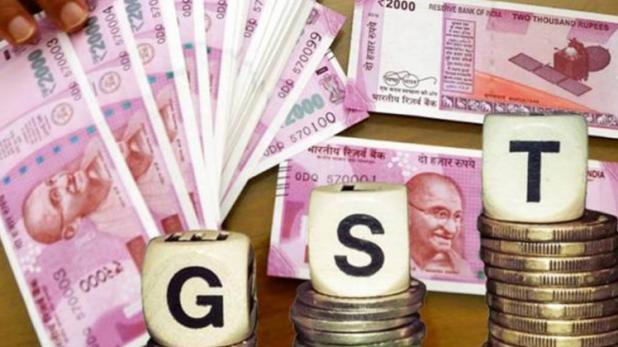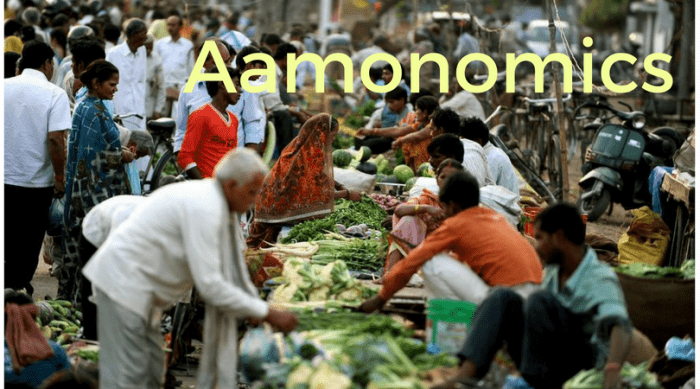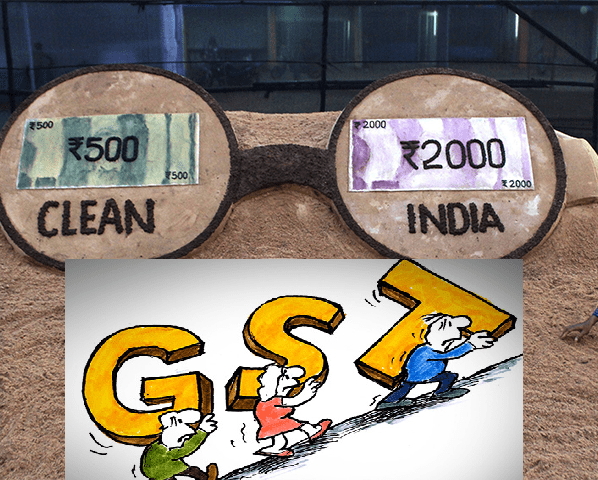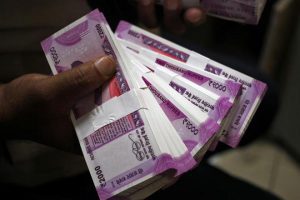A populist budget with more sops is expected. The Modi government would justify the reasons for the two mammoth steps, demonetisation and GST, aimed at cleaning the economy. These policies made in the dark, reasons Navodita, our Associate Editor, in the weekly column, exclusively for Different Truths.
This year’s budget is going to be around working forward on the two main steps the government took to supposedly cleanse the economy and boost India’s economic health – demonetisation and GST. But what exactly is the story of these two mammoth steps? Let’s find out.
In both cases, innocent bystanders, legitimate business-owners and millions of Indians working in the informal sector were badly hit. Was the policy made in the dark? Was the policy faulty? Or was it a case of financial illegitimacy getting confused with those working in the unorganised and informal sector?
Demonetisation entailed a ban of Rs. 500 and Rs. 1000 notes. The initial aim was to confiscate hordes of illegal cash held by a few, but in the process, millions of Indians, who for their daily living depend on perfectly legal cash, were forced to go through the excruciating and unanticipated pain of standing in long queues leaving their work aside. Even though the intention was right, the way of its implementation was faulty and needed careful thinking through. Was it appropriate to suddenly make 85 percent of legal tender worthless without any initial notice or warning? Did this policy implementation require good care and thoughtfulness on the part of the government?
Gautam Prateek, Richard Knopf, and Bjorn C. Peterson believe that it is immaterial whether the common man was brave and prepared to make sacrifices for the greater good. Their analysis of four different English newspapers reveals that the common man is context-dependent and that this amorphous and fluid form has been co-opted across the entire political spectrum in India, at least in the demonetisation debates between 8th November and 18th December 2016. They go on to add that this ‘common man’ is very gullible and coming days will reveal more about the veracity of this assumption. They thus doubt the real claims made by the Modi government of ‘benefit to the common man’.
Another argument put forward by the Modi government was that the aim of demonetisation was to contain the rising incidence of fake notes and black money. However, the scope of the scheme was later expanded to have a fourfold objective: to curb corruption, counterfeiting; the use of high denomination notes for terrorist activities; and especially the ‘accumulation of black money’ generated by income that had not been declared to the tax authorities. However, Tulsi Jaykumar argues that holding cash has behavioural aspects. Demonetisation failed to take into account the differential aspects of utility. While it may be a long time before evidence regarding the impact of demonetisation on the black money will be available, there is evidence on another stated objective of the demonetisation exercise, namely, reduction in the number of cash transactions and a move towards a cashless economy, which indicates policy failure in this regard. Thus, she goes on to add that adopting a more pragmatic approach to an important public policy dilemma by incorporating behavioural economics may have led to more robust prescriptions for optimal policy, as also better policy implications. It would have thus also guaranteed the better success of this costly behavioural experiment.
The second major economic move – GST is still work in progress and it will be some time before we can reap its benefits too. Recently, the Goods and Services Tax (GST) Council decided to slash rates on 29 items, mainly handicrafts, to zero percent, which was announced by Uttarakhand Finance Minister Prakash Pant. He also said that no decision was taken on simplification of GST return filing. The Union Finance Minister Arun Jaitley announced that provision of carrying e-way bill, when moving goods between states, will be implemented from 1st February, and 15 states will be implementing the intra-state e-way bill. According to a slim majority of economists polled by Reuters, India’s economy won’t benefit significantly from the GST until after next fiscal. Disruptions from both GST implementation and demonetisation curtailed growth and manufacturing, services and consumer spending. That is why its benefits won’t be felt until at least April 2019.
Investment advisor at Venus India, K.K. Mittal said that disruptions from GST and demonetisation are expected to start receding from the second quarter of 2018 (April-June quarter) and a pickup in consumption, investment and growth shall commence then on.
A group of researchers also believe that tax reforms must bring about simplicity, not disruption. They say that the Indian version of the GST – with state GST, central GST and integrated GST – with multiple rates does not look simple. GST can have huge implications on the MSME sector where more than 90% of the businesses consist of partnership and proprietorship firms. The objective to plug the informal economy into formal setup may have benefits. But the cost can outweigh the benefits if done forcefully through radical reforms. Moreover, the decision to grow competitive should be a matter of choice and not compulsion. Presently, lower exemption threshold coupled with cumbersome compliance can prove to be counterproductive and push small businesses towards new ways of tax evasion, thereby breeding corruption.
What this Budget will entail is anybody’s guess, however, there have been talks of the government wanting to spend more on the healthcare sector on lines of Obamacare, which actually proved to be a failure for the government then. What it means for India and how it will be implemented is yet to be seen. There are definitely more sops in the offing for the rural sector and for agricultural farmers than anybody else.
©Navodita Pande
Photos from the Internet
#ModiGoverenment #Budget #GST #Demonitisation #Agriculture #IndianPoliticsAndEconomy #MoneyMattersOfIndia #IndianBudget #Aamonomics #DifferentTruths










 By
By

 By
By